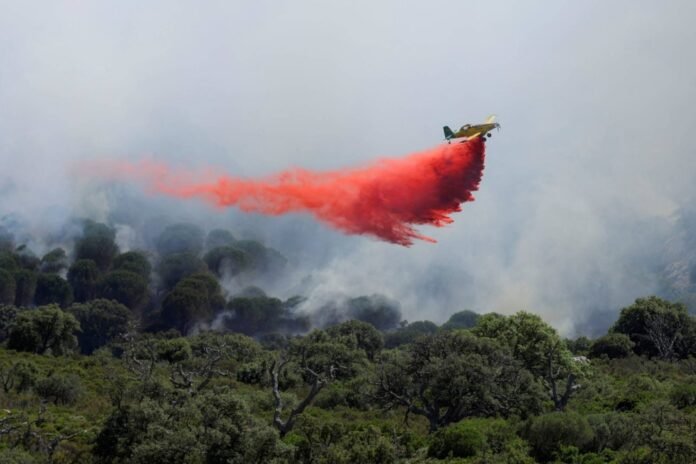As Europe braces for summer forest fires, it is putting about 550 firefighters and 32 planes on standby and planning to spend 600 million euros on water bombing, but experts warn the money would be better spent on prevention.
Last year’s wildfire season in Europe was among the worst of this century, the European Commission said.
Fires destroyed more than half a million hectares, led to mass evacuations and killed at least 20 people in Greece.
But fighting fires is only part of the answer.
“If we only invest in response capacity, we will have to keep investing more and more and we will either run out of money or be overwhelmed by the increase in the number of disasters,” said EU Commissioner for Crisis Management Janez Lenarcic. .
With climate change causing more heat waves and droughts worldwide, the number of extreme wildfires is expected to increase by as much as 30% by 2050, with larger fires becoming increasingly difficult to extinguish, a 2022 United Nations report shows.
Climate change is already costing Europe tens of billions of euros a year, Lenarcic said, and costs will rise if nothing is done to reduce emissions and invest in prevention.
But the potential costs of cutting EU carbon emissions have already sparked a backlash among many farmers and other voters in a key election year, threatening to undermine the EU’s green transition plans.
“If we do it, it won’t be easy, and it won’t be cheap,” Lenarcic said. “If we don’t do it, it will be much more expensive.”
Costs for the planet and wallet
Europe saw a sharp increase in the number of areas burned last summer, producing around 20 megatonnes of CO2, according to the European Forest Fire Information System, the equivalent of almost a third of all international aviation emissions in the EU in a year.
The fires also caused an estimated €4.8 billion in damage, according to Distrelec, an energy sector company that provides early warning sensors for forest fires.
Last year, dry soil, low humidity and high winds combined to ignite megafires that burned so fiercely that traditional aerial firefighting techniques could not handle them, forestry experts say.
“Airplanes can greatly help protect ground forces and property,” said Joao Carlos Verde, advisor at the Portuguese Integrated Fire Service (AGIF).
But, he said, “there will come a time when you can have all the fleet of airplanes you want, and that still won’t solve your problem.”
Perhaps, Verde said, the biggest obstacle to prevention was an image problem.
“The response is sexy. You see the lights, you hear the helicopters. Prevention is not sexy. No one sees it. It’s slow, but it’s paying off.”
Better safe than sorry
Wildfire experts have been warning for years about the ‘firefighting trap’, which prioritizes suppression, such as water bombing, over long-term prevention, protecting and restoring forests and peatlands.

In September, charred trees are seen in the Dadia National Park in the Evros region, Greece. | REUTERS Wildfire in the Evros region
Research from the World Bank and the European Commission estimates that one euro invested in wildfire prevention saves between four and seven euros in damage, but spending relies heavily on detection and response.
EU countries’ expenditure on fire protection – both combating and prevention – has remained more or less stable since 2001 at 0.5% of total government expenditure, but research by WWF Greece showed that by 2022 more than 80% of the Greek budget for fire protection shifted to firefighting. .
This led to a review of spending, and while the nonprofit said the balance sheet was now better, they said most spending still went toward suppression.
Portugal, which suffered devastating forest fires in 2017, had achieved a 50:50 split between prevention and control measures in 2019, AGIF said.
The agency streamlined its firefighting and conservation efforts to tackle the causes of fires, something Verde recommended to the EU.
Engaging communities, especially in rural areas, is key to successful prevention methods, Verde said.
“Make people feel like they have an incentive to manage the land… you’ll have fewer fires,” he said.
This could prove challenging as the EU’s climate policies, including nature restoration efforts to make forests more fire-resistant, have been criticized by farmers angry about the costs.
“Nature restoration must happen,” Lenarcic said, but he added that farmers must be supported financially.
“But the green transition is vital, existentially important, also for them.”



